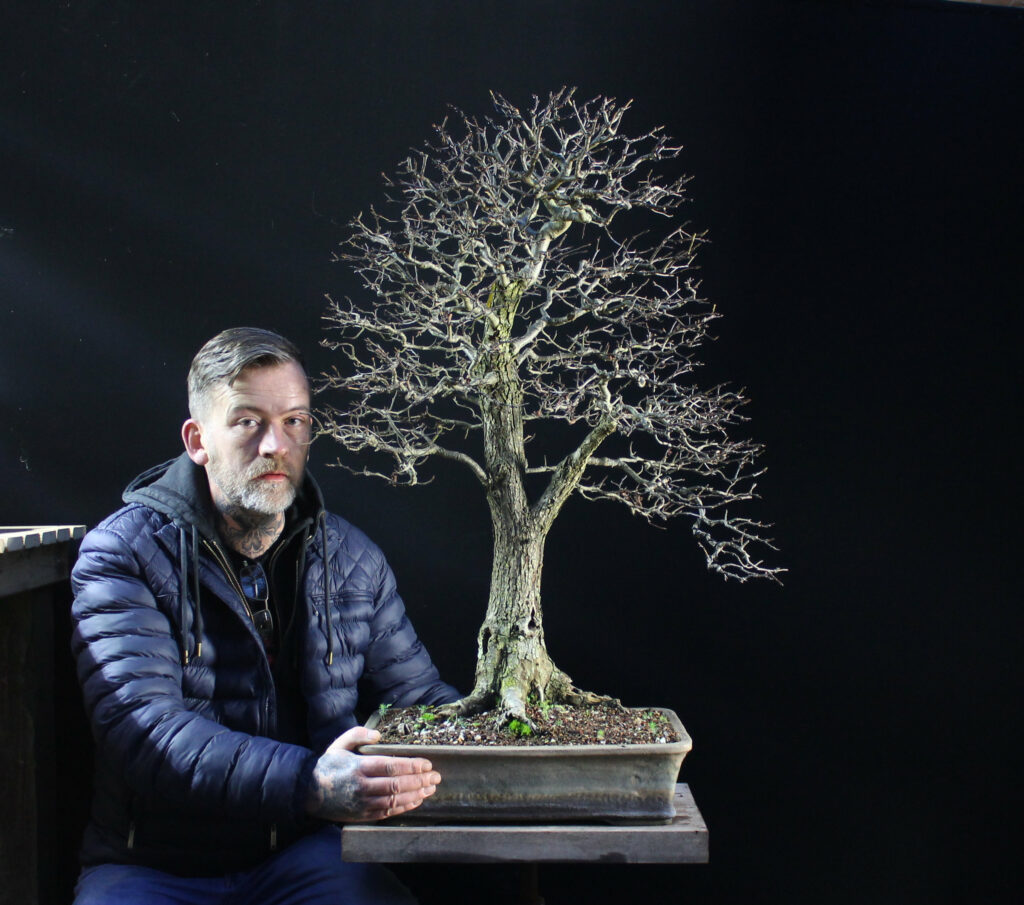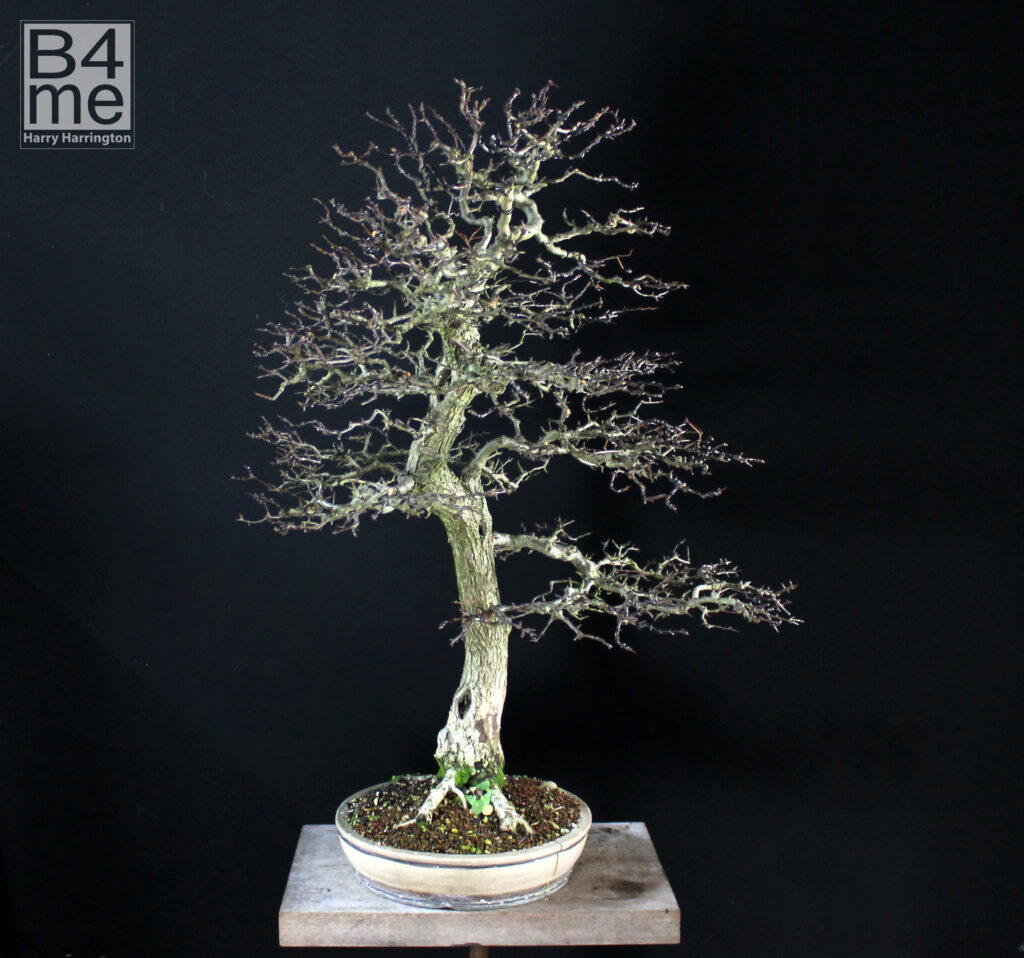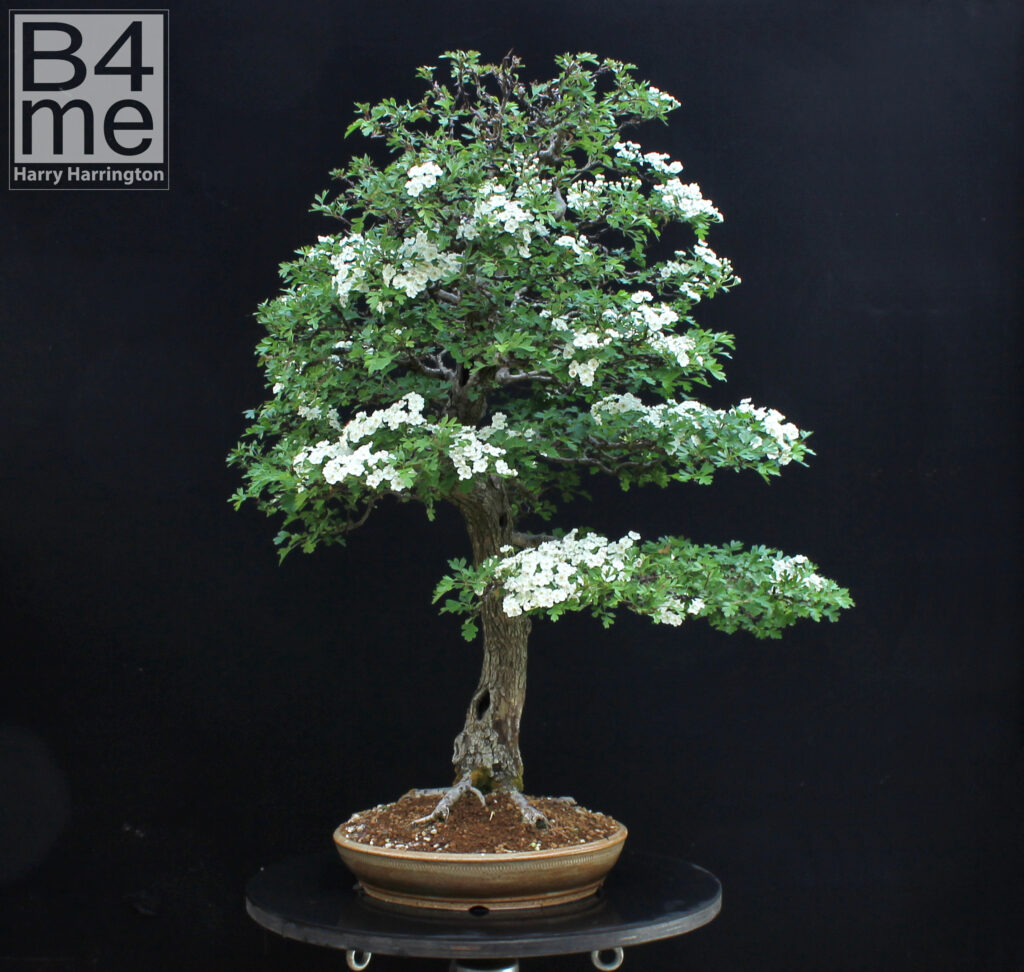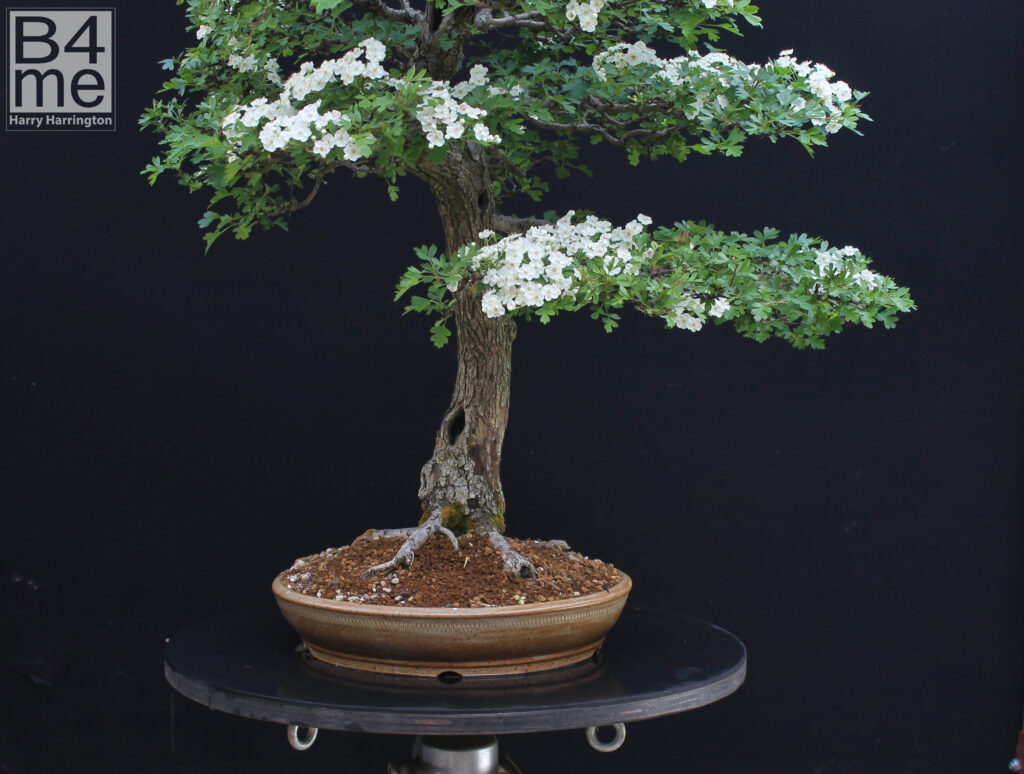
Crataegus is a genus of 200 or more species of usually spiny, deciduous, occasionally semi-evergreen small trees and shrubs occurring in woodland and scrub in Northern temperate regions of the world. The leaves are alternative, simple or lobed and mid- to dark- green; some species produce good Autumn colour turning yellow, red or orange.
Many hawthorns have irregular, almost muscular trunks with complex patterns of ridging which reflects their internal vessels. The bark is a dark-brown and has a tendency to peel off in large pieces. Commonly known for their very sharp thorns, their May flowers and following haws or fruit for which Crataegus take their common names of hawthorn or may. The haws are red in colour and follow the May flowering of white or deep pink colours depending on species and variety. Hawthorns can take a number of years to start flowering, trees grown in the ground taking up to 10 years and trees that are raised from seed in pots can sometimes take as long as 20years.

SPECIES COMMONLY USED FOR BONSAI
Common Hawthorn/ Crataegus monogyna varieties
Also known as May, Quick, Quickthorn, Crataegus monogyna is a rounded, deciduous tree with a large number of thorns and broadly ovate to diamond shaped, deeply 3- to 7- lobed, glossy leaves up to 5cm long. Pads of 6-12 fragrant white flowers upto 1.5cm across are borne in late Spring followed by ovoid glossy, dark red fruit. Can reach heights of 10metres in its native Europe.
Hawthorn/ Crataegus oxycantha (syn.Crataegus laevigata)
Also known as May or Midland Hawthorn, the Crataegus oxycantha variety ‘Pauls Scarlet’ is a frequently used cultivar with its profuse, double, dark-pink flowers. (Confusingly ‘Pauls Scarlet is sometimes seen sold as ‘Coccinea Plena’). Slightly less vigorous than the Common Hawthorn, Crataegus oxycantha varieties of which there are many, can reach heights of 8 metres in their native Europe,India and North Africa.
Crataegus cuneata/ Japanese Hawthorn.
Very similar to Common Hawthorn but with white flowers. Reaches heights of 6metres in native South East Europe and Asia.
BONSAI CULTIVATION NOTES
POSITION: Full sun or semi-shade. Very resistant to strong winds and require a position with good air-circulation to help resist fungal diseases such as mildew.
FEEDING: Fortnightly with either high nitrogen to promote strong growth or high phosphorus and potassium fertiliser to promote flowering and fruiting.
REPOTTING: Annually in Spring as leaf buds extend in a basic soil mix until around 10 years of age. Once the basic branch structure is in place, it is preferable to leave the roots unpruned and pot bound to reduce coarse vegetative growth and encourage flowering spurs.
PRUNING: Hard prune in late winter or early Spring, small wounds can take a long time to completely heal over, larger wounds, over 3cm in width, are unlikely to completely heal.
WIRING: Can be wired anytime through the growing season though Autumn is best, older branches thicken very slowly so wire can be left in place for long periods.
PROPAGATION: Remove seed from flesh as soon as ripe and sow outside. Softwood cuttings in summer and air-layers in Spring. Surprisingly airlayers can take a long time to root; great care must be taken to remove every part of the cambium layer.
PESTS AND DISEASES: Caterpillars, aphids, rust and mildews.
STYLING: Suitable for all forms except broom. Suitable for all sizes.



